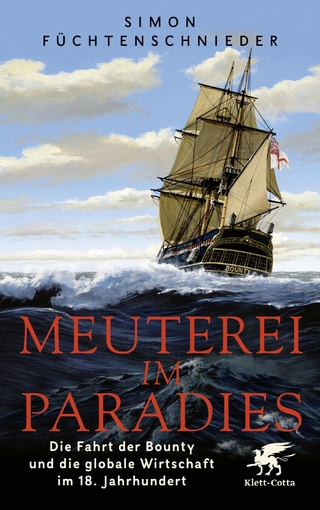
The Lawn Road Flats
Spies, Writers and Artists
Seiten
2019
The Boydell Press (Verlag)
978-1-78327-470-3 (ISBN)
The Boydell Press (Verlag)
978-1-78327-470-3 (ISBN)
The story of a modernist building with a significant place in the history of Soviet espionage in Britain, where communist spies rubbed shoulders with British artists, sculptors and writers
The Isokon building, also know as Lawn Road Flats, in London was the haunt of some of the most prominent Soviet agents working against Britain in the 1930s and 40s, among them Arnold Deutsch, the controller of the group of Cambridge spies who came to be known as the "Magnificent Five" after the Western movie The Magnificent Seven; the photographer Edith Tudor-Hart; and Melita Norwood, the longest-serving Soviet spy in British espionage history (andinspiration for Judi Dench's character in Red Joan).
However, it wasn't only spies who were attracted to the Lawn Road Flats. The crime writer Agatha Christie wrote her only spy novel N or M? in the Flats, and anumber of other artists, architects and writers were also drawn there, among them the Bauhaus exiles Walter Gropius, László Moholy-Nagy and Marcel Breuer; the sculptors and painters Henry Moore and Barbara Hepworth; the novelist Nicholas Monsarrat; the writer and founder of The Good Food Guide Raymond Postgate; and the poet (and Bletchley Park intelligence officer) Charles Brasch. The Isokon building boasted its own restaurant and dining club, wheremany of the Flats' most famous residents rubbed shoulders with some of the most dangerous communist spies ever to operate in Britain. Agatha Christie often said that she invented her characters from what she observed going on around her. With the Kuczynskis - probably the most successful family of spies in the history of espionage - in residence, she would have had plenty of material.
This book tells the story of a remarkable Modernist building and its even more extraordinary cast of characters.
DAVID BURKE is a historian of intelligence and international relations and author of The Spy Who Came In From the Co-op: Melita Norwood and the Ending of Cold War Espionage and Russia and the British Left: From the 1848 Revolutions to the General Strike.
The Isokon building, also know as Lawn Road Flats, in London was the haunt of some of the most prominent Soviet agents working against Britain in the 1930s and 40s, among them Arnold Deutsch, the controller of the group of Cambridge spies who came to be known as the "Magnificent Five" after the Western movie The Magnificent Seven; the photographer Edith Tudor-Hart; and Melita Norwood, the longest-serving Soviet spy in British espionage history (andinspiration for Judi Dench's character in Red Joan).
However, it wasn't only spies who were attracted to the Lawn Road Flats. The crime writer Agatha Christie wrote her only spy novel N or M? in the Flats, and anumber of other artists, architects and writers were also drawn there, among them the Bauhaus exiles Walter Gropius, László Moholy-Nagy and Marcel Breuer; the sculptors and painters Henry Moore and Barbara Hepworth; the novelist Nicholas Monsarrat; the writer and founder of The Good Food Guide Raymond Postgate; and the poet (and Bletchley Park intelligence officer) Charles Brasch. The Isokon building boasted its own restaurant and dining club, wheremany of the Flats' most famous residents rubbed shoulders with some of the most dangerous communist spies ever to operate in Britain. Agatha Christie often said that she invented her characters from what she observed going on around her. With the Kuczynskis - probably the most successful family of spies in the history of espionage - in residence, she would have had plenty of material.
This book tells the story of a remarkable Modernist building and its even more extraordinary cast of characters.
DAVID BURKE is a historian of intelligence and international relations and author of The Spy Who Came In From the Co-op: Melita Norwood and the Ending of Cold War Espionage and Russia and the British Left: From the 1848 Revolutions to the General Strike.
| Erscheinungsdatum | 24.10.2019 |
|---|---|
| Reihe/Serie | History of British Intelligence |
| Zusatzinfo | 31 b/w illus. |
| Verlagsort | Woodbridge |
| Sprache | englisch |
| Maße | 156 x 234 mm |
| Themenwelt | Kunst / Musik / Theater ► Kunstgeschichte / Kunststile |
| Geisteswissenschaften ► Archäologie | |
| Geisteswissenschaften ► Geschichte ► Allgemeines / Lexika | |
| Geschichte ► Allgemeine Geschichte ► Neuzeit (bis 1918) | |
| Geschichte ► Allgemeine Geschichte ► Zeitgeschichte | |
| ISBN-10 | 1-78327-470-0 / 1783274700 |
| ISBN-13 | 978-1-78327-470-3 / 9781783274703 |
| Zustand | Neuware |
| Haben Sie eine Frage zum Produkt? |
Mehr entdecken
aus dem Bereich
aus dem Bereich
Giordano Bruno - ein ketzerisches Leben
Buch | Hardcover (2024)
C.H.Beck (Verlag)
29,90 €
die Fahrt der Bounty und die globale Wirtschaft im 18. Jahrhundert
Buch | Hardcover (2024)
Klett-Cotta (Verlag)
25,00 €


